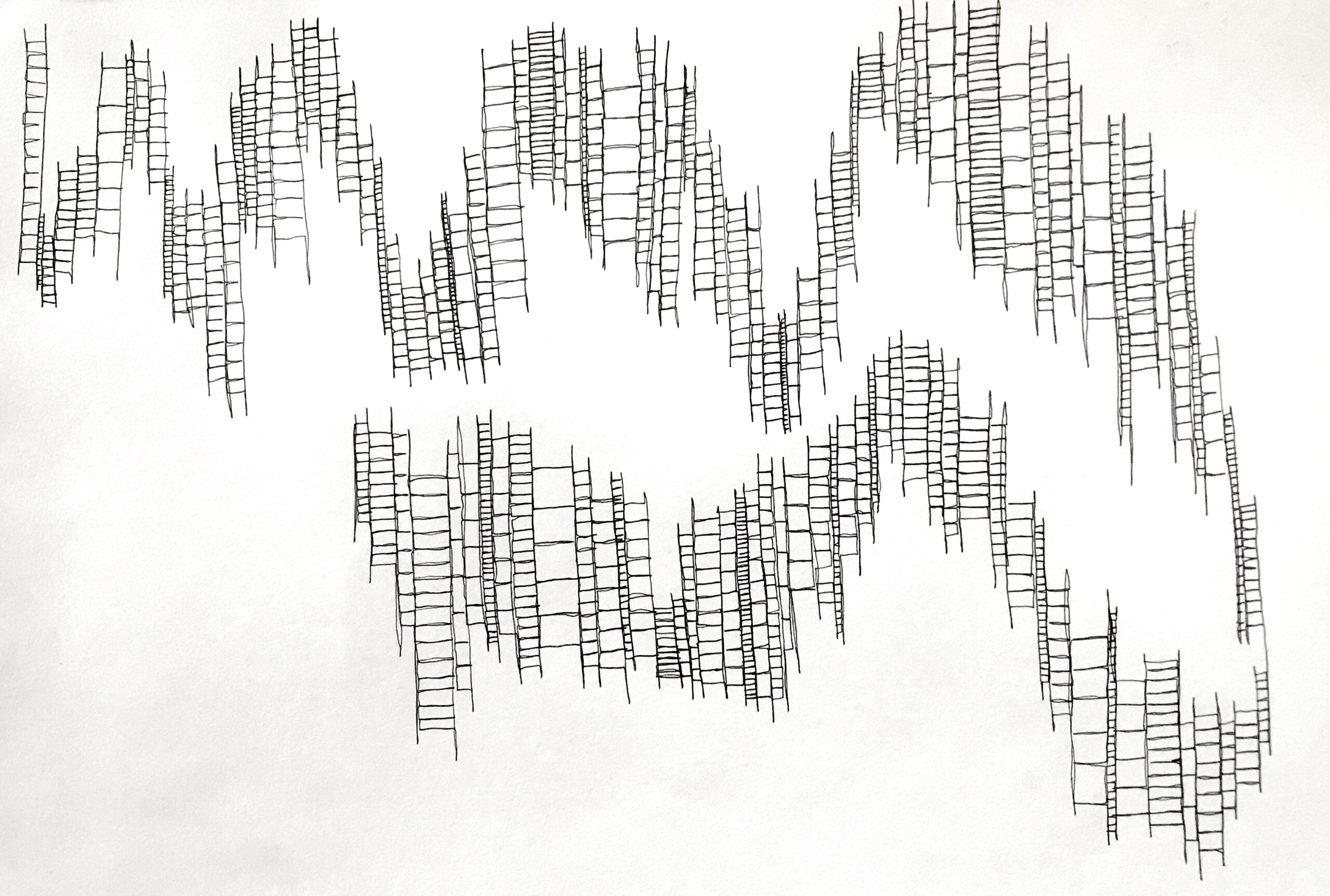
I’ve developed a habit of drawing ladders as a continuous unbroken line.
Repetitive action.
A block of ink on paper.
Not a collection of objects but a surface.
Flat and weblike.
Interested in the repetitive gestures of the opposing ‘up’ and ‘across’ strokes of my pen, I was keen to capture this action.
I found this site below (click on link) which allows you to do a basic drawing then replay the action.
https://sketchtoy.com/69416226
I enjoy the absent hand, the way that contrary to the kind of action ladders typically facilitate (up and down) the ladders reached laterally, creeping sideways.
As an experiment I think it’s raised some interesting possibilities.
The result is obviously amateurish: the distracting sidebar ads, compulsory graph paper background and irritating ‘Vibration’ function which I suppose is meant to emulate stock motion animation.
However, perhaps on a different programme, with the increased control of a digital pen and pad allowing free-er movement outside of the confines of the laptop touchpad, I think I could produce an interesting animation.
Projected across a room
occupying space
creeping along walls, chomping, stitching up surface in horizontal progression.
William Kentridge

The work of Kentridge is an obvious point of reference. Animated drawing that delivers the impression of active line which has the propensity to act intelligently, independent of the artist’s hand.
Kentridge’s work is often described as a ‘palimpsest’.
However, far from the archeological scope of this term, Kentridge employs palimpsest actively, where the viewer is able to see the process of erasure and subsequent mark making, rather than having to imagine that process of destruction and recreation via the traces of the original left behind.
Similarly, in the technique that I have begun to explore here, I won’t be erasing past mark-making, yet the movement of the drawn line will give that sense of previous mark making being resigned to the past. However, they will still remain visible in the present and exist as part of the whole drawn composition.
This is unlike most drawn animation where numerous celluloid frames are used to give the impression of seamless movement and ‘real’ unprompted action.


The work of William Kentridge is an obvious point of reference. Animated drawing that delivers the impression of active line that has the propensity to act intelligently, independent of the artist’s hand.
The word that is often associated with Kentridge’s work is ‘palimpsest’. However, Kentridge employs this device actively, where the viewer is able to see the process of erasure and subsequent mark making, rather than having to imagine that process of destruction and recreation via the traces of the original left behind.
Similarly, in the technique that I have begun to explore here, I won’t be erasing past mark-making, yet the movement of the drawn line will give that sense of previous mark making being resigned to the past. However, they will still remain visible in the present and exist as part of the whole drawn composition.
This is unlike most drawn animation where numerous celluloid frames are used to give the impression of seamless movement and ‘real’ unprompted action.